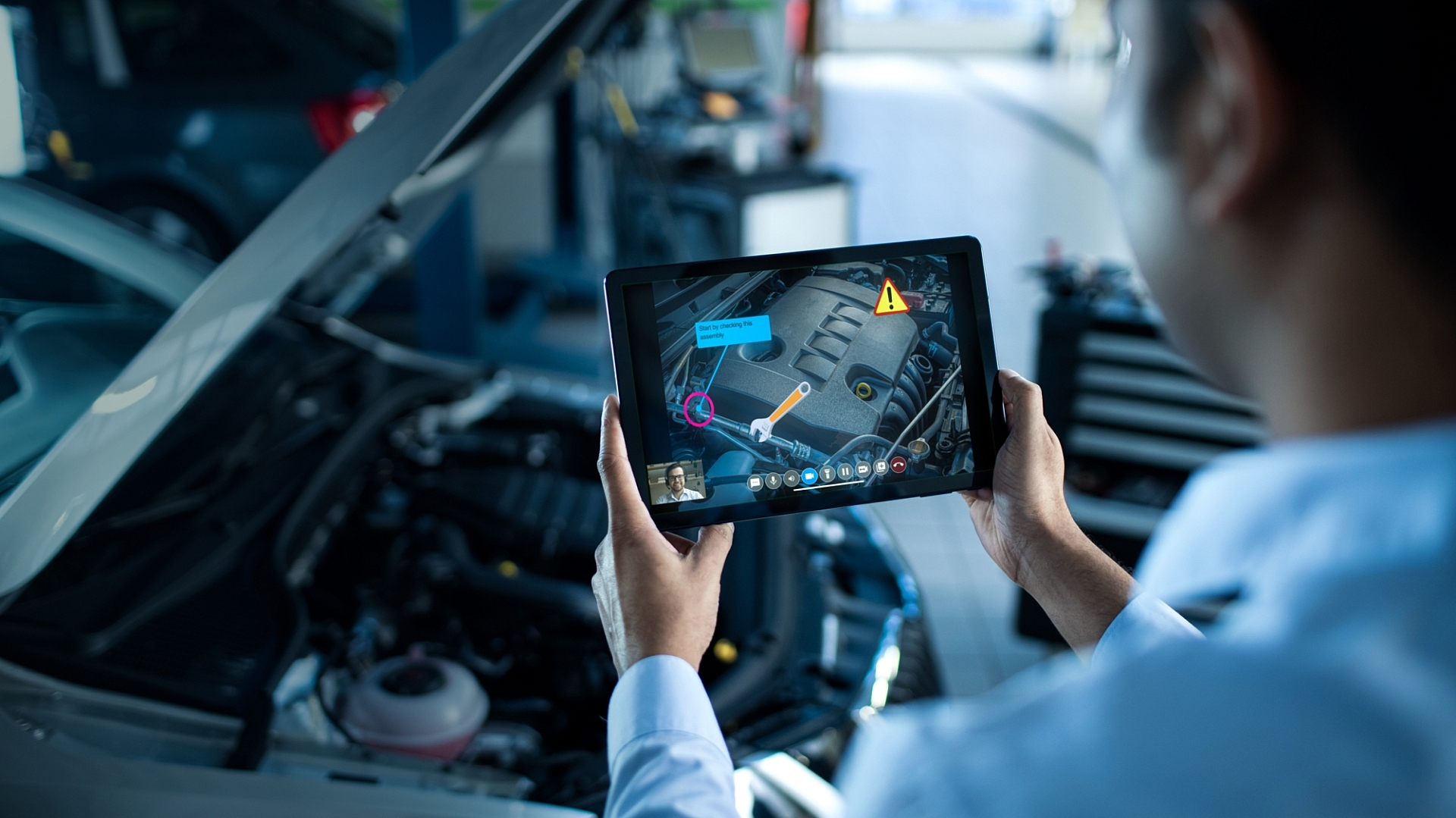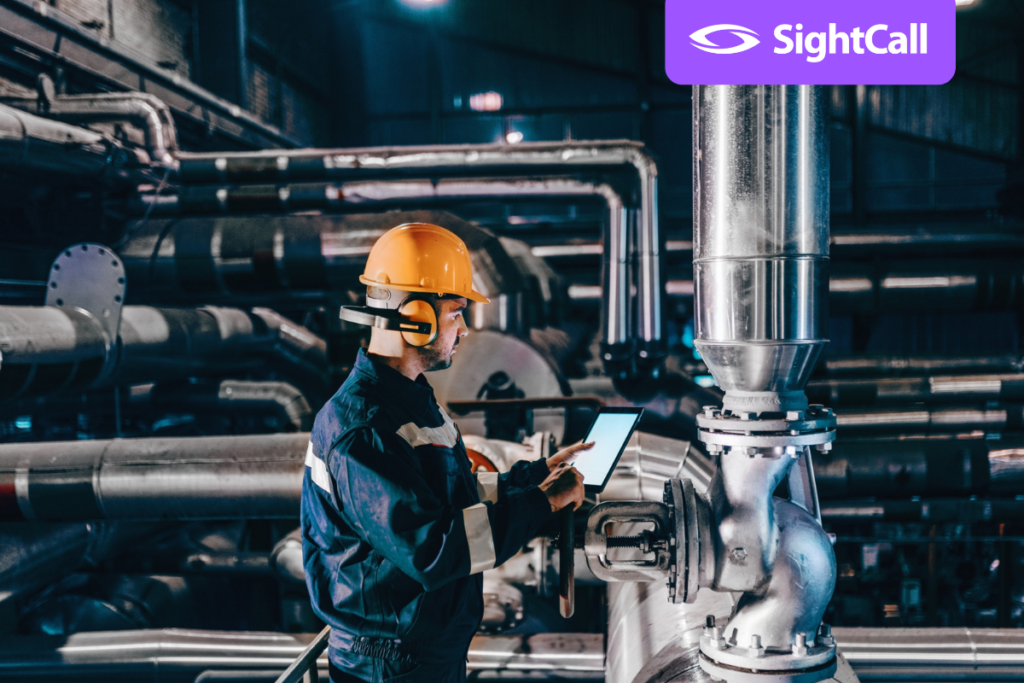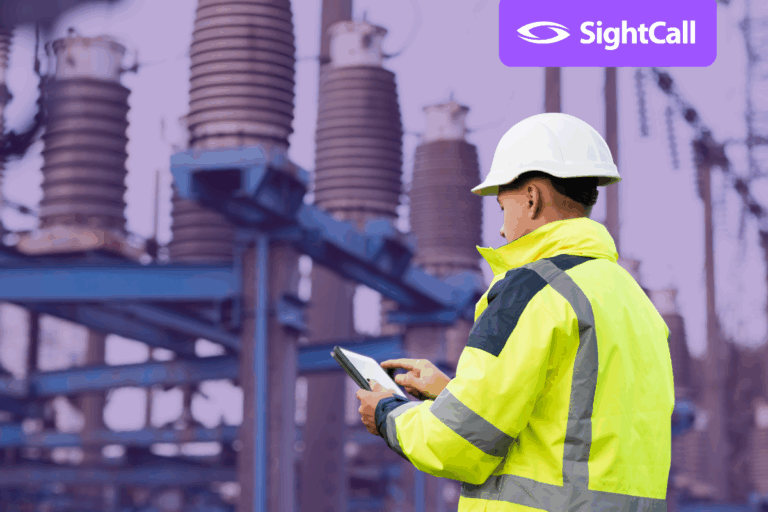For businesses looking to expand their operating spaces, transcending geographical and time barriers, while fulfilling their obligations to both customers and regulators, remote inspections are highly attractive.
While the COVID-19 pandemic is receding or becoming more manageable in many places around the world, the magnitude of disruption it posed to company operations was enlightening. Despite the fact that supply chains seized up and physical travel became unsafe and frequently impossible due to restrictions, enterprises still needed to inspect essential assets, comply with industry regulations and auditing requirements, and respond promptly to customer concerns.
In other words, businesses needed a way for the show to go on, despite whatever external pressures they were facing.
For small businesses, in particular, the use of free communication tools like WhatsApp or FaceTime were frequently embraced as a stopgap measure. But privacy concerns, lack of integration with important field service management (FSM) systems (Salesforce, SAP, ServiceMax, and more), and limitations of the platform themselves made these unsuitable for long-term use.
In this article, we will examine how remote video inspection puts enterprise experts where they’re needed, when they’re needed, for both customer and regulatory requirements. We also introduce remote visual inspection solutions that come with fast, flexible implementation.
What is remote video inspection?
Remote video inspection, sometimes referred to as remote visual inspection or simply “remote inspection,” is the process of using real-time video technology to scope and inspect a physical location, a company asset like a piece of equipment, or a customer product or device that needs to be examined or repaired. Remote inspection can be quite dynamic, and with the right platform, practically indistinguishable from an in-person site visit.
Remote video inspection options have been around for a while in some form, though many companies considered them niche, perhaps even unnecessary for normal operations. The COVID-19 pandemic changed this landscape because companies couldn’t go where they needed to but still needed to ensure continuity of business.
Some of the key benefits of remote video inspection include:
- Improved carbon footprint
- Reduced parts wastage
- Faster time-to-inspection
- Improved inspector/technician utilization
- Increased customer satisfaction
- Maintained business continuity
- Decreased costs
Not all inspections can be replaced by video alone, but in many cases, they can be completely augmented by video platforms that call on advanced technologies like augmented reality, artificial intelligence, and digital process automation. These technologies work in harmony with live video to help inspectors to see the remote environment as if they were onsite.
Platforms like SightCall help smart devices to see the environment as well, taking stock of the physical equipment and presenting contextual data back to the remote inspector for analysis and review.

How does Augmented Reality (AR) improve remote video inspections?
AR is the enhancement of an interactive, virtual component onto a real-world environment or situation, layering tools like informational text and 3D graphics on top of a user’s field of vision.
The use of AR tools has witnessed exponential growth over the past several years – with more than 1.7 billion global users projected in 2024 alone. AR tools combined with live video provide inspectors and technicians with the context they need to accurately perform tasks. They can make on-screen annotations, get accurate measurements remotely, and share images and information during the live video call.
In fact, by harnessing AR capabilities, it’s possible for technicians to take advantage of the quicker processes, perform more inspections than would otherwise be possible, and even prioritize site visits, where possible, through the use of remote triaging.
Broadly speaking, our internal data shows inspections with augmented reality are capable of achieving:
- 81% growth in first-time fix rates
- A 69% reduction in time to issue resolution, and a 50% reduction in truck rolls
- Knowledge savings through a 41% decrease in training time
- Customer satisfaction increases by as high as 30 points
How does Digital Process Automation (DPA) improve remote video inspections?
DPA is the path to self-guided work experiences which standardize workflows, improve performance and mitigate paper process errors that can derail essential processes. This ensures that inspectors are all working in the same fashion, collecting data as prescribed by their organization, and ensuring that the proper data is collected and stored with accuracy before they leave the job site.
SightCall’s own DPA solution, Digital Flows, allows inspectors, technicians, and customers to complete remote video inspections, pre-inspections, and other applicable tasks with no ambiguity or confusion. Following a prescribed set of instructions, they can work through digital flows that help them to document information, interact with equipment in their environment, and then call on the live support of a remote expert when escalation is needed. Using data collected from the digital flows, the remote expert is already prepared with the context needed to help the person onsite.
The training process also becomes more straightforward, with digital process automation providing new technicians or workers needing to upskill with an immersive and straightforward learning experience that happens on the job.
Below, we examine several examples of remote video inspections, all AR-guided and some with digital process automation included, in the real world.

Use cases for remote visual inspections
Case study 1: Food safety revolutionized with remote video audits
Safe food practices impact consumers all over the world and are crucial for human health. As such, verification involves a complex, multi-level system of inspections and audits, ones which Kraft Heinz uses to ensure quality assurance, identify and coordinate improvements, and resolve issues related to customer complaints.
At the onset of the COVID-19 crisis, Kraft Heinz needed to maintain continuous high standards of food safety for consumers, without disrupting a supply chain built on a wide global network of suppliers, co-packers, and warehouses. It needed a remote video inspection platform that was robust enough to be implemented in a variety of specific use cases while allowing for the standardization of both routine and incident-related audits.
Together Kraft Heinz and SightCall were able to roll out a live video inspection process within a matter of weeks, digitally transforming their processes to integrate visual support into visits that were traditionally onsite.
Previously, visits such as factory tours and inspections could take up to three days, entailing multiple visits. This was due to the need to review relevant documents and certifications while on-site – something that can now be done with virtual inspections in advance.
Now, before inspections begin, SightCall sessions are used for pre-inspections where relevant documents and logistics can be arranged.
During the actual inspection, expert remote auditors can work through their inspection checklists and see the facility as if they are onsite. With full control of the mobile device being used for the inspection, they can deploy features like a flashlight to have better visibility, or use AR annotations to illustrate recommendations and identify potential problems.
With the ability to capture and save high-resolution photos from the live video stream, they can store visual records of equipment and processes alongside the inspection or audit documents.
With less travel, simple coordination, quicker resolution times, and the ease of storing documentation, the number of inspections and audits conducted has skyrocketed – with the added benefit of a socially conscious company with a lower carbon footprint.
Case Study 2: Remote support is essential for the standardization of offshore rig work
One of the world’s biggest energy technology companies needed to standardize maintenance and repair processes, including in remote and high-risk locations, while also improving audit compliance and reducing their carbon footprint.
Their need for highly specialized engineers to complete various tasks meant that numerous in-person site visits were often required, and this posed a distinct challenge for offshore oil rigs. Deployment times were traditionally measured not in days, but in weeks.
Additionally, the company’s engineers logged their work and notes with pen and paper. They jotted down what repairs and maintenance tasks they performed on a wide range of highly specialized equipment, and then transferred those notes to a database at the end of long shifts.
This came with considerable risk. In fact, the business once paid back close to $1 million to a customer when a repair was improperly documented and unverifiable.
By contrast, with remote support for repair and maintenance, a technician can access a specific SightCall Digital Flow on their mobile device. As they go through the automated process, they are prompted to enter all relevant information and collect helpful media, such as photos or videos. Engineers scan a serial or model number, automatically capture display readings, perform accurate AR measurements, and document and confirm their work on the spot.
The company subsequently achieved hundreds of thousands of dollars in reduced travel costs in just six months, with significant savings realized on every site visit including a reduced carbon footprint.
Case Study 3: Savings in local government with virtual inspections
Central Bedfordshire Council averages 25,000 routine repairs a year, which are reported by tenants through a telephone line or customer app.
First-time fix rates and the convenience of scheduling repairs were long a problem for the Council, but crucially, its internal research showed the majority of tenants had smartphones – and were comfortable accessing services online.
During early lockdowns in the UK in 2020, emergency repairs continued, but routine repairs decreased, with tenants becoming understandably reluctant to book in-person appointments. As such, a combination of virtual and limited face-to-face solutions were needed to continue services while also minimizing risk for both tenants and workers. Security was paramount, as well as the need for a solution that could directly provide resources to tenants and collect information about their needs including photos and measurements.
The Council deployed SightCall in a matter of weeks to their maintenance advisory team – the ones responsible for responding to tenant repair requests. Using a combination of SightCall and diagnostic software, the team triaged repairs by viewing the problem remotely and consulting their technical documentation. This eliminated the need to have highly trained experts on the front-line of customer support or a site visit.
Employees and workers can now approve or void work orders, verify emergency requests, and plan and manage large renovation projects remotely.
The need for multiple site visits and the associated travel time was drastically reduced. First-time fix rates have risen from 77.3% to 98.84% since deployment. In fact, cutting down on the number of unnecessary site visits increases the total number of repairs that can be completed by the team. Within weeks of deploying SightCall, the maintenance teams were able to clear the backlog created as a result of COVID-related restrictions.
Case Study 4: Repair and maintenance of diagnostic equipment simplified
GE Healthcare, a global health technology company, specializes in the engineering and production of diagnostic machinery – including MRI, CT, and X-ray scanners. When troubleshooting an issue during a field maintenance visit was especially complicated, a field technician frequently mobilized one of their peers or a more senior technician to the job site, resulting in multiple trips and greater labor costs applied to a work order. This often caused the affected machinery to be out of use for a considerable period of time while a solution was found – much to a clinician’s detriment.
A day, let alone longer, without an MRI scanner creates a significant barrier. Patient appointments must be delayed or canceled, and the scanner becomes unavailable in the event an emergency arises. The company’s goal was to shorten the length of time on-site and improve first-time fix rates, reducing the need for multiple trips. When searching for a visual assistance solution, a priority was to achieve the highest possible call quality to facilitate real-time work order completion, as well as a higher issue resolution rate.
Today, GE Healthcare complements its field support solution with SightCall AR-powered visual assistance, drawn especially to its ease of scalability. Field technicians were impressed by the reliable video quality and consistent audio and video. They could carry out remote-guided repairs with greater ease and agility, thanks to touchless capabilities using the device of their choice. Site data, like product serial numbers, could be fed back to the work order with the smartphone camera simply held in front of the desired data to read it, with no manual entry required.
GE Healthcare noticed an increase in several key performance indicators, most notably with improved resolution rates. Maintenance turnaround times were shortened to averages of six to eight hours, versus three days prior to the implementation of SightCall. With the average call taking only 40 minutes, the company estimates it has saved hundreds of thousands of dollars through improved medical device uptime.
Case Study 5: Visual Assistance technology revolutionizes remote property repairs and insurance claim inspections
Research from J.D. Power in 2021 concluded that the use of seamless digital filing services to complete insurance claims information resulted in higher performance and satisfaction scores across the board. For certain, a growing number of insurers, as well as their partners meeting policyholder needs, are turning to remote inspections for more rapid initial response times and expedited solutions.
A global third-party administrator (TPA) working closely with insurance companies, their adjusters and homeowners needed a standardized way to ensure that repair work among a large and widespread contractor network was performed and inspected to exacting standards.
This company offers customized managed repair, restoration, and mitigation, with contractors spanning some 2,000 locations. Offering a one-stop solution for securing high-quality repairs for property damage and restoration work meant the company earned a reputation among homeowners as one of the nation’s most trusted names in the restoration industry. But the sheer number of contractors made standardized repair processes all but impossible to achieve, at least without multiple inspections and redundancies. Safety and regulatory compliance issues also became a concern.
Today, the company harnesses SightCall Digital Flows integrated within customer relationship management (CRM) software. When kicking off an insurance claim or property inspection, a Digital Flow guides the contractor to record a video of the work site while describing the work needed. The contractor is then prompted to identify any safety concerns present.
Selecting any of these will trigger an action that immediately loops in the people needed to approve the work so it can move forward. A task is generated in the CRM, notifying the relevant party to review the case file and associated media.
During the repair, remote support can also be used to monitor the quality of the work. For instance, contractors are prompted to take videos with commentary about the work for each relevant room or area in the house. If any additional work needs are identified, they can be instantly sent directly to a supervisor of the project and an insurance adjuster for carrier approval.
Full and auditable documentation acts as a quality check. And for stressed homeowners, repair projects are completed faster, with fewer errors, maximizing satisfaction. Being able to inspect and approve work remotely has already helped to reduce delays, and eliminate unnecessary site visits.
Discover how remote inspections can unleash your company’s potential
With the right partner, implementing remote video inspections can future-proof and disruption-proof your organization – well ahead of the next crisis. To start, your enterprise may find them especially suitable for certain use cases or target key performance indicators, and from these successes, the remote inspection solution can be scaled.
From manufacturing to utilities to healthcare and countless other sectors, SightCall’s enterprise-grade visual support platform harnesses the power of AR to allow technicians to work at maximum potential. Unleash your full potential and start your digital transformation journey today by requesting a SightCall demo.



